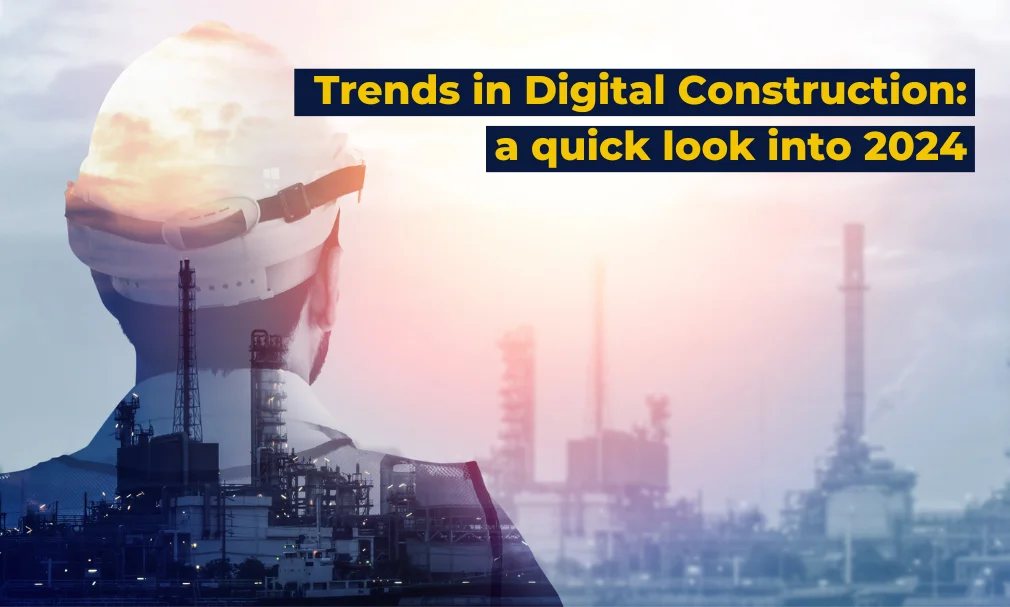Digital advancements and technology has become imperative for those Construction companies that want to stay ahead of the competition and ensure successful project outcomes. As we step into 2024, General Contractors, particularly those focusing on Construction Management and Design-Build, are at the forefront of leveraging cutting-edge technologies. It is time to talk about the key digital construction trends shaping the industry for the next year.
1. BIM software and Project coordination:
Building Information Modeling continues to revolutionize project coordination by providing a comprehensive, collaborative platform for design and construction professionals. BIM facilitates the creation of a digital representation of the project, enhancing communication and coordination among various stakeholders. General Contractors, Project Management Companies and Engineering firms are increasingly relying on BIM software to streamline processes, optimize resource allocation, and minimize errors during the construction phase.
2. Artificial Intelligence applied to safety and productivity:
Artificial Intelligence (AI) is making significant inroads into the construction industry, with a particular focus on enhancing safety and productivity. AI-powered tools can analyze vast amounts of data to identify potential safety hazards and recommend preventive measures. Additionally, AI applications are optimizing project scheduling, resource allocation, and workflow management, contributing to increased efficiency and project success.
3. Automation and robotics in field operations:
Another trend in digital construction are automation and robotics are transforming field operations, driving efficiency and precision. General Contractors are incorporating automated machinery for tasks such as bricklaying, concrete pouring, and even autonomous vehicles for material transportation. These technologies not only improve accuracy but also enhance worker safety by automating repetitive and often hazardous tasks.
4. Reality Capture and drones for quality and progress tracking
Reality capture technologies are becoming integral for General Contractors seeking to enhance quality control and progress tracking. Laser Scaning, LiDAR and Drones equipped with high-resolution cameras, provide a 3D copy of construction sites. This enables project managers to identify issues early on, make data-driven decisions, and maintain a consistently high level of quality throughout the construction process.
Pioneering solutions like the C2B Platform are reshaping the landscape of Quality Control Progress. C2B Platform introduces a sophisticated layer of automation based on the combination of BIM, Reality Capture and Machine learning (AI).
5. Drones and UAVs:
Drones, or Unmanned Aerial Vehicles (UAVs), have emerged as powerful tools in the construction industry. From surveying and mapping to monitoring and inspections, drones offer a bird’s-eye view of construction sites. Companies are leveraging this technology to enhance project visibility, improve safety inspections, and optimize workflows, ultimately leading to more efficient and informed decision-making.
6. Virtual Reality and Augmented Reality for coordination and field operations:
Virtual Reality (VR) and Augmented Reality (AR) are increasingly integrated into construction workflows, offering immersive experiences to visualize designs in three dimensions, detect clashes, and provide on-site workers with augmented information for enhanced decision-making. These technologies bridge the gap between the digital and physical realms, leading to more informed and collaborative construction processes.
7. Off-Site construction:
Off-site construction is gaining traction as a trend that significantly accelerates project timelines. These methods to prefabricate components in controlled environments are reducing on-site labor requirements and increasing construction speed and safety. This approach also minimizes waste and enhances overall project sustainability.
8. 3D Printing for Construction Projects:
3D printing is emerging as a game-changer in construction, offering a revolutionary approach to building structures. Contractors are exploring the possibilities of 3D printing for constructing complex architectural elements. This technology holds the promise of reducing costs, speeding up construction, and enabling the creation of intricate designs that would be challenging with traditional construction methods.
Staying ahead of the curve in 2024 means embracing these digital construction trends. Collaboration with BIM software, automation, new realities and robotics are driving productivity in field operations and closing the gap between the VDC department and operations team. Those General Contractors incorporating these trends into their workflows are not just building structures; they are shaping the future of construction itself.

